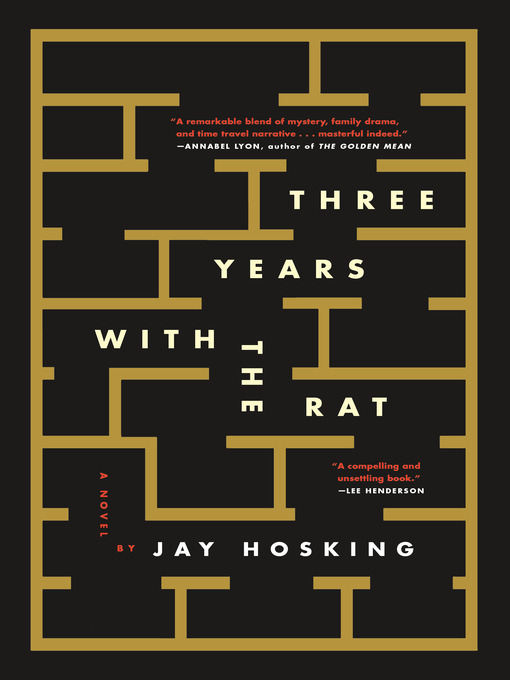
Three Years with the Rat
A Novel
کتاب های مرتبط
- اطلاعات
- نقد و بررسی
- دیدگاه کاربران
نقد و بررسی

October 31, 2016
Hosking’s smart and spooky debut novel follows an unnamed narrator from the time he moves to Toronto from Vancouver through the period two years later when his damaged sister, Grace, and her doting boyfriend, John, have both vanished, possibly into a parallel universe. The narrator—called “Scruffy” by his friend Lee and “Danger” by his new Tornoto girlfriend—works at an undemanding job that gives him plenty of time to explore the clues left behind by John and Grace, the latter of whom is a psychologist studying the subjective nature of time. There’s a lab rat named Buddy, a notebook written in code, and most notably, a handmade wooden box, lined on the inside with mirrors, which takes up most of the couple’s second bedroom and has some disturbing effects on those who enter it. Hosking grounds the fantasy and philosophical speculation firmly in a detailed version of Toronto in the early 21st century, and his plot bounces nimbly among the three years of the title, answering questions earlier chapters raise while opening up new ones. The ending pays off all the preceding buildup, pulling narrative strands together with satisfying finesse while venturing into new territory.

October 15, 2016
A really gone girl.Hosking's assured debut, a heady mixture of relationship drama and sci-fi time-travel thriller, features a fascinating character at its center: Grace, a brilliant, erratic, obsessively driven science student who has suddenly and inexplicably vanished. Our narrator and guide through the resulting narrative tangle, Grace's younger brother, suffers in comparison to his charismatic sister. A diffident underachiever, he's largely a passive figure in his own story, tagging along in the wake of his elder sibling's worldly social circle, until his investigation of Grace's disappearance uncovers her devastating secret--and the shocking actions of her unassuming genius boyfriend, John, who has rashly meddled with the secret mechanics of the universe itself for his own dark purpose. Structured anachronistically, Hosking's time-looping tale deftly teases the reader with well-deployed reveals and intrigues with elegantly limned science-fiction ideas (including the brain-hurting concept of "subjective time" and spooky otherworldly "hunters" set upon those who temporally trespass). Hosking's prose is limpid and tonally sophisticated; he's a graceful wordsmith as well as a cerebral idea man. One may wish for more of Grace's defiant, complicated voice--a version of the story from her point of view might have yielded more surprises and richer rewards--but Hosking's novel satisfies as both speculative fiction and character study. A potent, sophisticated combination of science-fiction novel and psychological thriller.
COPYRIGHT(2016) Kirkus Reviews, ALL RIGHTS RESERVED.

Starred review from November 15, 2016
The author, a neuroscientist specializing in research into how we make decisions, turns in a startlingly fine performance with his first novel, about a man so determined to find his missing sister that he risks his own lifehis own reality, in factto solve the mystery of her disappearance. Each chapter is broken into three smaller segments, the first set in 2008, the second in 2007, and the third in 2006. We're left to figure out the reason for this structure for ourselves, which amounts to having to sort out exactly what's going on in the story. But Hosking drops some hints. Clearly, there's something weird happening: a tree that's suddenly gone, a stolen car that never existed, a former girlfriend who suddenly can't recall her relationship with the narrator. Eventually we begin to realize that the characters' dialogue about subjective reality and other mind-bending ideas isn't just there because the author likes writing about such matters; it's there because it's a fundamental element of the story he's telling. There are probably 100 ways this novel could have failed (plausibility alone poses a real challenge), but, instead, it succeeds brilliantly, drawing us completely into a labyrinthine narrative.(Reprinted with permission of Booklist, copyright 2016, American Library Association.)

























دیدگاه کاربران